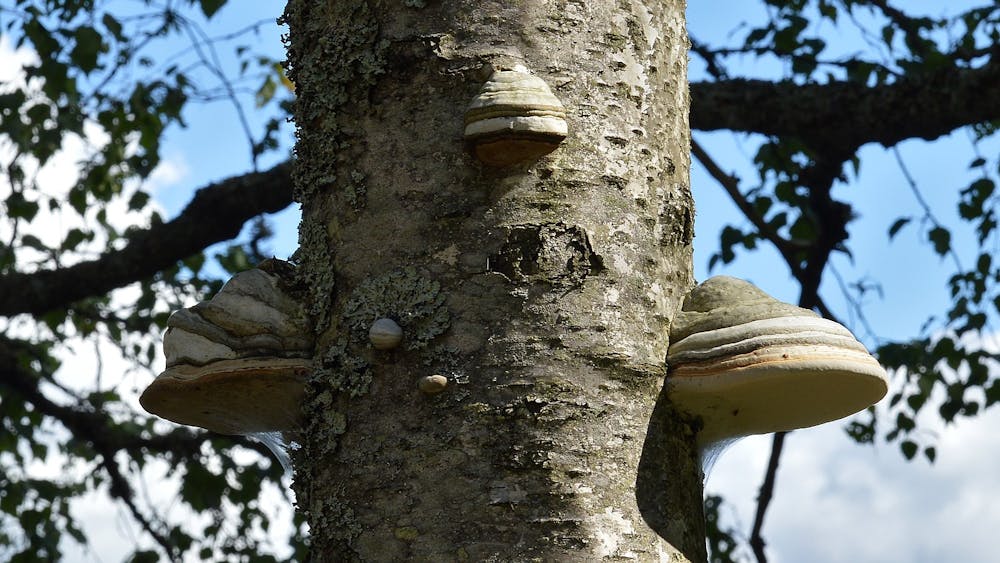As we reach the end of February, let’s recap some of the biggest headlines of the week. This week featured some big discoveries about a new layer of the Earth, fungal plants replacing common building materials, surprising massive early galaxies and advances in quantum computing.
A new layer of the Earth in the inner core discovered
In a geology class, students typically learn there are four layers of the Earth: the crust, mantle, outer core and inner core. However, researchers at the Australian National University propose a new 800-mile wide layer that exists distinct from the 1500-mile wide inner core. They call this the innermost inner core in their paper published in Nature Communications.
Though this theory was hypothesized over 20 years ago, the technology needed to prove this claim emerged only recently. This is done by analyzing the seismic waves from earthquakes that travel through the center of the Earth. Previously, there was no way to study these waves as there were not enough seismometers across the Earth. However, with new and better seismometers positioned around the globe, the researchers were able to follow faint seismic waves that bounced up to five times through the innermost inner core.
By observing the difference in speeds of waves traveling at different angles, the scientists determined the alignment of iron crystals in the innermost inner core to be distinct from the rest of the inner core. Many geologists and physicists in the field are interested in leveraging this knowledge of a new layer into new findings about Earth’s magnetic field.
Fungus could replace plastic as a lightweight material
A study in Science Advances revealed the surprising ultralightweight high-performance properties of Fomes fomentarius— commonly known as tinder or hoof fungus. This fungus often grows on birch and beech trees and has been historically used as a fire starter. The fruiting body has three different layers primarily composed of mycelium reinforced by an extracellular matrix, but each layer’s microstructure is unique, leading to different properties and use cases.
The research group found that by manipulating the cell morphology and extracellular polymeric composition of the fungus, the created substance can outperform many man-made and natural materials such as plastic, leather, wood and cork. The use case for this material can range from football helmets and headphone parts to aircraft exoskeletons. There still needs to be more research done on the mass production of this fungus, but the researchers believe advances in the biotechnology industry can help grow and harvest this material on a larger scale.
Massive early galaxies contradict understanding of the early universe
Ever since NASA released data from the James Webb Space Telescope, there have constantly been new discoveries about the universe. Astronomers have found six new early galaxies from 600 million years after the Big Bang that shouldn’t exist according to current models.
The issue is that these galaxies are as large and as mature as the Milky Way. Astronomers initially believed that galaxies had yet to form for the universe’s first 400 million years, only emerging around 600 million years. Data from the Hubble Space Telescope supported this theory. However, these newly discovered galaxies conflict with 99% of cosmology models, which means current models must be revised.
In hopes of further studying this phenomenon, scientists are planning to point the James Webb Telescope’s mirror towards the location of these six galaxies and obtain light spectra information. They hope to get data on the physical and chemical compositions of these galaxies to further confirm their existence. With this new information, scientists hope they can understand galaxy and star formation in the early universe and how the current principles underlying this phenomenon are incomplete.
Google makes advancements in quantum computing error reduction
Google Quantum AI published a paper in Nature revealing a new algorithm for error detection. Google achieved this by programming a logical qubit that relied on an ensemble of physical qubits. By performing operations between the physical and logical qubits, the computer can check to see if errors exist.
Since 2019, quantum computers have been used to solve problems that classical computers take much longer to do, but they still maintain a high error rate. Errors can also occur in a classical computer where a bit accidentally flips, however, classical computers have error detection bits that allow the computer to detect when the bit flips and fix it. Quantum computers cannot do the same because they use qubits that exist in a quantum state between zero and one. These qubits’ quantum states cannot be replicated onto copies for error checking due to the complication the quantum state introduces.
However, scaling this new algorithm to more realistic levels for quantum supercomputers will require more research. The authors of the paper say that this is just the first step in quantum error correction.





